How to turn off password request after Sleep on Windows 11
However, for those who often have to sleep the computer to do other work, entering the password every time they come back takes a lot of time.
So is there a way to disable the password every time the Windows 11 computer is woken from Sleep mode? Let's go find the answer.
Why do you need a password after waking your Windows 11 computer from Sleep?
Simply put, this feature helps you protect the data stored on your computer. Without it, bad guys can easily wake up your Windows 11 computer and then access it to rummage, steal data or sabotage what you're doing.
So is it safe to disable the password when waking up a Windows 11 computer?
The answer depends on your work environment. If you regularly work in a safe environment, this should not have a bad effect. However, be careful if your work environment is not very safe.
How to turn off Windows 11 computer password when waking from Sleep mode
Depending on the situation, you can do this in a number of different ways. However, if your computer is stable, without any errors, you should use the adjustment method using the Settings application right below:
Method 1: Use the Settings app
You press Win + I to open Settings then click on Accounts in the left sidebar.

Click Sign-in options.
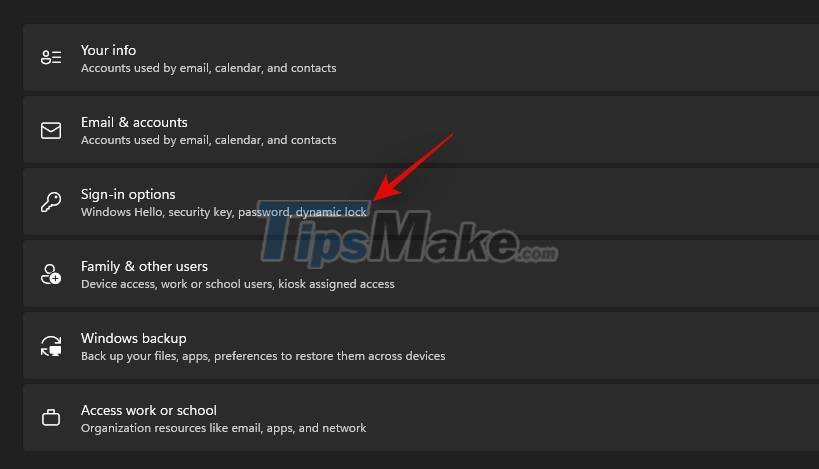
Find the option If you've been away, when should Windows require you to sign in again? in the Additional settings section.

Click the drop-down arrow where When PC wakes up from sleep and then select Never.

Close the Settings app and then restart your computer. From now on, your computer will no longer ask you for a password every time you wake up from Sleep mode.
Method 2: Use Group Policy Editor (not applicable to Windows 11 Home)
Press Win + R on your keyboard then type gpedit.msc and then press Enter.

In the Group Policy Editor window, navigate to the following folder:
Computer Configuration > Administrative Templates > System > Power Management > Sleep Settings
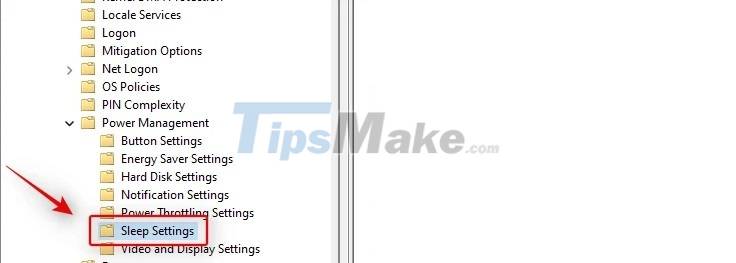
Find and double-click the value named Require a password when a computer wakes (plugged in).
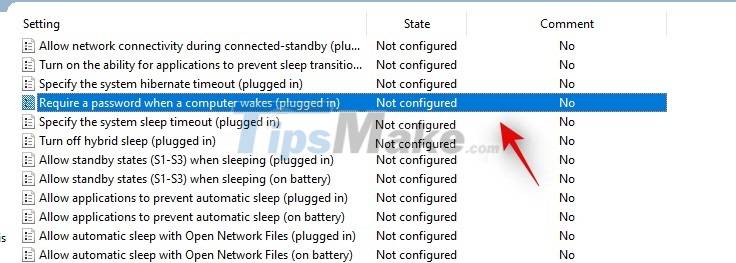
Select Disable
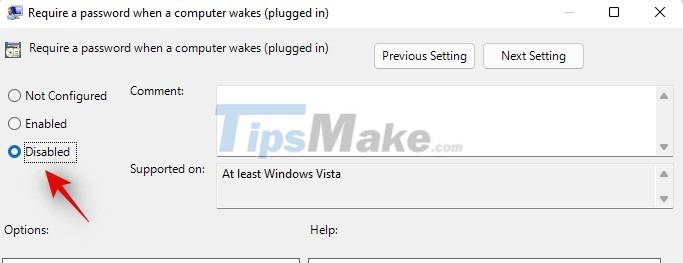
Then click OK to save the settings.

Now you do the same with the Require a password when a computer wakes (on battery) value.

It is done!
Method 3: Use CMD
You can also use CMD to disable the password every time you wake up your Windows 11 computer. The steps are as follows:
Press Win + R to open Run then type CMD. Press Ctrl + Shift + Enter to open CMD with Admin rights.
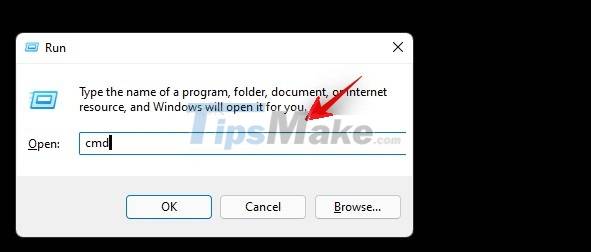
Type the following command and then press Enter:
powercfg /SETDCVALUEINDEX SCHEME_CURRENT SUB_NONE CONSOLELOCK 0

Enter the following command and then press Enter:
powercfg /SETACVALUEINDEX SCHEME_CURRENT SUB_NONE CONSOLELOCK 0

After the commands have finished running, you just need to restart the machine to complete the installation process.
Method 4: Use Registry Editor
Of course, the Registry Editor can also control this problem.
Press Win + R to open Run then type regedit and then press Enter.
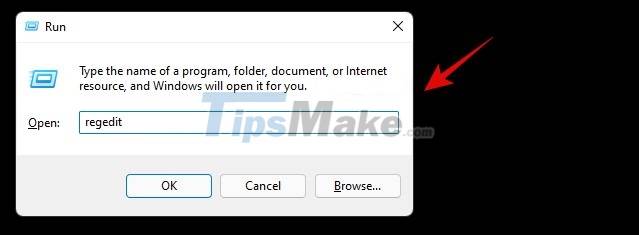
In the Registry Editor window, navigate to the Microsoft folder according to the following path:
ComputerHKEY_LOCAL_MACHINESOFTWAREPoliciesMicrosoft
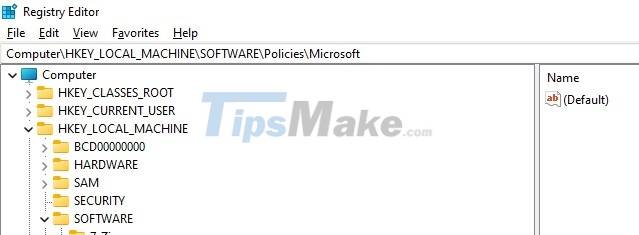
Right-click an empty space and select New.

Select Key and then rename the folder to Power.
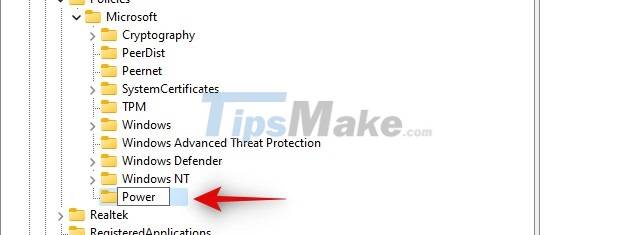
Right-click on the newly created Power folder and select New > Key then name this new folder PowerSettings.
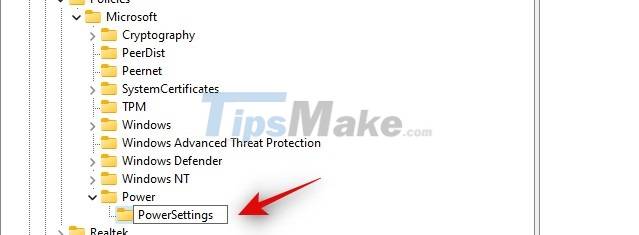
Select the PowerSettings folder then right-click the empty space on the right and select New.

Click DWORD (32-bit) Value.

Name this value DCSettingIndex.

Double-click DCSettingIndex and then enter 0 in the Value data box and then click OK.
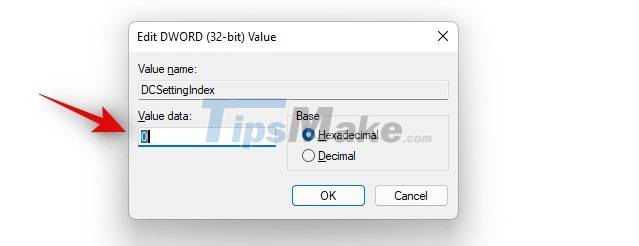
Continue to right-click on the empty space and then select New > DWORD (32-bit) Value.

This time, name the value ACSettingIndex.

Double-click ACSettingIndex and then enter 0 in the Value data box and then click OK.
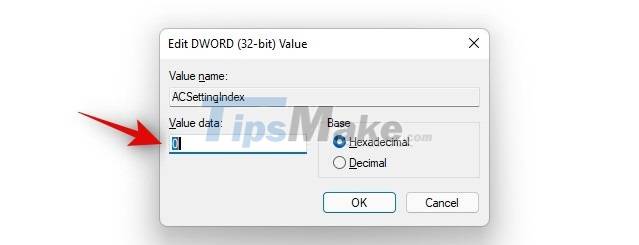
Once done, exit Registry Editor and then restart your computer to complete the installation.
How to stay safe after disabling the password
Because you've disabled the need to enter a password every time you wake up from Sleep, anyone can access your Windows 11 computer every time you go to sleep and then go out. Therefore, you need to maintain safety with a few tips below:
1. Always turn off your computer if you have to go out for too long
If you have to go out for too long, you need to turn off the computer instead of just Sleep. This will prevent bad guys from getting access to your computer while you do your work outside.
2. Dynamic Lock mode setting
You can set up a Windows 11 computer to lock itself using Dynamic Lock.
Is Dynamic Lock really secure?
In terms of security, Dynamic Lock is not very secure because it is just a backup protection measure. TipsMake.com recommends against relying too much on Dynamic Lock. This feature is only really safe if you lock your computer as soon as you are no longer around within a meter or two instead of the connection range of Bluetooth waves (maybe up to several tens of meters).
You should read it
- How to disable automatic Sleep mode on Windows 10?
- How to disable Sleep mode on Windows 11
- 15 'truths' completely wrong about sleep (part 1)
- How to turn off the Macbook login when opening the device from the Sleep state
- How to troubleshoot problems with Sleep mode in Windows 10
- How to adjust the Sleep mode on Windows 7
- How to set up a Windows 11 PC to automatically go to Sleep
- How to Prevent Windows 10 from Going to Sleep
May be interested
- How to fix Windows 10 can't sleep and won't turn on error
 sleep mode is very commonly used, especially for those who often have to travel to work. however, recently, many readers have asked tipsmake about the error that windows 10 cannot sleep, which causes many unpleasant situations that cause users to lose or unstore data. in this article, tipsmake will help you fix the error of windows 10 not sleeping in the most thorough way.
sleep mode is very commonly used, especially for those who often have to travel to work. however, recently, many readers have asked tipsmake about the error that windows 10 cannot sleep, which causes many unpleasant situations that cause users to lose or unstore data. in this article, tipsmake will help you fix the error of windows 10 not sleeping in the most thorough way. - How to Prevent Windows 10 from Going to Sleep
 do you get annoyed when your computer goes to sleep when you leave it for just a few minutes? and when you come back, you have to enter your password again! and sometimes your game crashes and you lose your save. having you computer go to...
do you get annoyed when your computer goes to sleep when you leave it for just a few minutes? and when you come back, you have to enter your password again! and sometimes your game crashes and you lose your save. having you computer go to... - Request (HTTP) in HTTP
 a client sends an http request to a server in the form a request message that includes the following format.
a client sends an http request to a server in the form a request message that includes the following format. - What You Need to Know About Sleep Needs by Age
 sleep is important, no matter what age you are. experts recommend that adults get between seven and nine hours of sleep each night, but your sleep needs change slightly as you get older.
sleep is important, no matter what age you are. experts recommend that adults get between seven and nine hours of sleep each night, but your sleep needs change slightly as you get older. - How to fix Windows 10 automatically activating Sleep Mode
 some computers running windows 10 fail to activate sleep mode by themselves, causing users to turn on the computer again. usually, this sleep mode error usually occurs due to settings on a windows 10 computer and we can handle it as follows:
some computers running windows 10 fail to activate sleep mode by themselves, causing users to turn on the computer again. usually, this sleep mode error usually occurs due to settings on a windows 10 computer and we can handle it as follows: - 15 'truths' completely wrong about sleep (part 1)
 here is the real answer to the myths that you still think about sleep. it turns out many things are not the same as we think.
here is the real answer to the myths that you still think about sleep. it turns out many things are not the same as we think. - How to turn off Sleep mode in Windows 10/11
 sleep mode on windows will put the computer into the lowest power consumption mode, extending the computer's battery life when the device is not in use.
sleep mode on windows will put the computer into the lowest power consumption mode, extending the computer's battery life when the device is not in use. - How to enable and disable the Sleep mode in Windows 10
 how to turn on, turn off the sleep mode in windows 10. on windows 10, the default mode will automatically put the computer into the sleep state after a period of inactivity. many of you do not like this mode if you often have to run the computer to download d
how to turn on, turn off the sleep mode in windows 10. on windows 10, the default mode will automatically put the computer into the sleep state after a period of inactivity. many of you do not like this mode if you often have to run the computer to download d - How to troubleshoot problems with Sleep mode in Windows 10
 setting your pc to sleep mode is a great way to save power and still be able to continue using your computer when you want. but what should you do if your pc 'wakes up' or enters the sleep mode automatically?
setting your pc to sleep mode is a great way to save power and still be able to continue using your computer when you want. but what should you do if your pc 'wakes up' or enters the sleep mode automatically? - Turn off password display in Windows 8 when logging in
 when you enter the password to log in to windows 8 / 8.1, at the end of the input box will appear a button with the icon is quite similar to the eye. when you click on, what you have entered will appear. the article will guide you to turn off the password display button in the windows 8 / 8.1 login screen by customizing the registry or editing it in local group policy.
when you enter the password to log in to windows 8 / 8.1, at the end of the input box will appear a button with the icon is quite similar to the eye. when you click on, what you have entered will appear. the article will guide you to turn off the password display button in the windows 8 / 8.1 login screen by customizing the registry or editing it in local group policy.










 Windows 11 will soon allow users to automatically hide the Taskbar
Windows 11 will soon allow users to automatically hide the Taskbar 5 things you need to do after updating to Windows 11
5 things you need to do after updating to Windows 11 Soon to be able to see app status, battery status... right in the Task Manager of Windows 11
Soon to be able to see app status, battery status... right in the Task Manager of Windows 11 Leaked series of upcoming features on Windows 11
Leaked series of upcoming features on Windows 11 After all, Windows 11 will have 3D emoji
After all, Windows 11 will have 3D emoji How to create a 'guest' account on Windows 11
How to create a 'guest' account on Windows 11